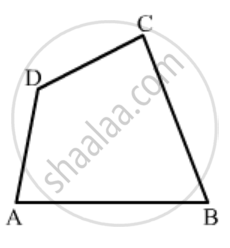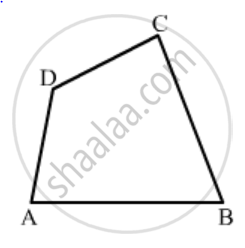Advertisements
Advertisements
Question
Investigate :
Use strips and fasteners to make a triangle and a quadrilateral.
Try to push inward at any one vertex of the triangle. Do the same to the quadrilateral. Is the triangle distorted? Is the quadrilateral distorted? Is the triangle rigid?
Why is it that structures like electric towers make use of triangular shapes and not quadrilaterals?
Solution
A triangle is a rigid figure as compared to a quadrilateral. Therefore pressing on any vertex of the triangle does not cause any distortion in its shape. This is the reason why structures like power towers use triangular shapes, not quadrilateral shapes.
APPEARS IN
RELATED QUESTIONS
In Fig. 16.19, ABCD is a quadrilateral.
Name a pair of adjacent sides.

In Fig. 16.19, ABCD is a quadrilateral.
Name a pair of opposite angles.

In Fig. 16.19, ABCD is a quadrilateral.
How many pairs of adjacent angles are there?

ABCD is a trapezium in which AB || DC. M and N are the mid-points of AD and the respectively. If AB = 12 cm, MN = 14 cm, then CD =
Two angles of a quadrilateral are 89° and 113°. If the other two angles are equal; find the equal angles.
From the following figure find;
- x
- ∠ABC
- ∠ACD
In a quadrilateral ABCD, AO and BO are bisectors of angle A and angle B respectively. Show that:
∠AOB = (∠C + ∠D)
ΔPQR and ΔSQR are on the same base QR with P and S on opposite sides of line QR, such that area of ΔPQR is equal to the area of ΔSQR. Show that QR bisects PS.
In a quadrilateral ABCD, ∠A = 72° and ∠C is the supplementary of ∠A. The other two angles are 2x – 10 and x + 4. Find the value of x and the measure of all the angles
Draw a rough sketch of a quadrilateral KLMN. State two pairs of adjacent angles.
